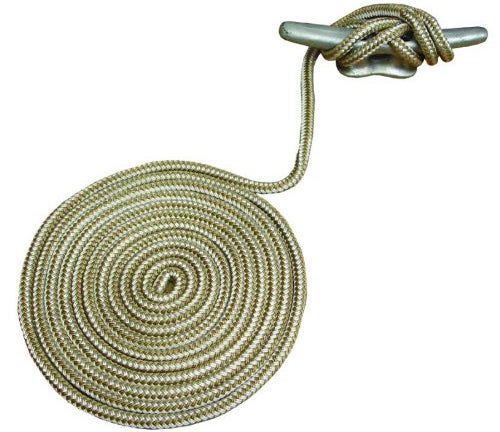Five Overlooked PWC Accessories

Don't hit the water without these five products
I’ve written countless articles on those extras that will enhance your PWC experience. Stuff like storage covers to protect your craft’s finish when not in use, or handheld electronics like GPS or VHF radios that will keep you safer touring. Rarely mentioned, however, are some of those overlooked items you learn to appreciate only after owning a craft long term. Simple items that just make the user experience easier, less of a hassle, and more enjoyable.
Wondering what you may have overlooked…or want to be prepared for what’s to come? Check out five of our favorite – but rarely mentioned – PWC accessories.
Fenders

As PWC enthusiasts, we’ve probably all felt the pain of that first scratch or gouge in our craft’s immaculate paint job. And yet, given that most happen when your PWC is tied up to a dock, it’s rather ironic that most of us do little to stop it from happening.
Storage Tips For All That Other PWC Stuff
While a PWC’s height and shape aren’t easy dimensions to work with, simple snap or clip-on fenders can certainly help ward off many scratches and dings. Some, like Taylor Made’s inflatable PWC Fenders, hook right onto the bond rail and hold your craft a few precious inches off the dock. Others, like Hull Hugr’s PWC Fender, feature hinged foam blocks in a vinyl sleeve designed to do likewise.

Even a standard boat fender, secured carefully into place, will help protect your craft from damage. Consider affixing the latter horizontally to the dock, rather than your PWC, to get the best results.
Dock Lines

Staying with that same basic thought, how many times have you tried to tie up to a dock…and haven’t had a dock line to get the job done?
You only need two. While you can make your own, it’s probably easiest to pick up a couple braided polypropylene lines, about 12’ long, with a loop on one end. These can be quickly attached to a PWC’s tow eye, bow and stern eyes, or around the handlebars, and then cleated off at the dock or cinched to a piling. Common alternatives include lines with nylon snap hooks looped into one end, or bungee-style dock lines that allow for some movement with wakes or tides.
And speaking of tying up at the dock, learn a few good knots, including the bowline and the clove hitch.
Boarding Steps

While most modern PWC come with a boarding step, you won’t find one on every model. Many older models also lack any type of boarding step at all, leaving riders to muscle themselves back aboard should they fall off or take a swim, a challenge in rough water or with multiple passengers.
Six Commonly Overlooked Winterizing Tips for PWC
According to reps at PWC accessories giant Watercraft Superstore, one of the company’s most purchased accessories is the Aqua Step, a spring-loaded, automatically retracting boarding step that can fit virtually any personal watercraft. Installing one requires a certain level of commitment. After all, you do have to drill a few holes in your PWC’s hull. The payoff, however, is well worth it as you’ll significantly improve the usability – and enjoyment – of your PWC.
Cooler/Dry Bags

I often tell people to think about how they use their PWC, and then prepare for that type of day on the water.
Like to bring along some cold drinks? Then get an insulated cooler bag that will keep those drinks together and chilled on ice. Cooler bags are sized to fit in most PWC storage compartments, and allow you to also bring along other gear in your craft’s storage without worrying about it getting soggy.
Or, maybe you’re worried about exactly that – your stuff getting soggy. If you plan to bring along clothes, towels, charts, or water-sensitive electronics, invest in a dry bag. They virtually guarantee your stuff will stay dry, and most are easily carried like a bag or backpack.
.jpg)
Use that same strategy for your pricey smartphone. Buy a waterproof bag, or invest in a waterproof cover like those from Lifeproof or Otter.
Flush Kit

Like boarding steps, most modern PWC should have one already installed, but some — like Sea-Doo’s new Spark — don’t. Countless older models also offer no easy option to flush your engine. And whether your ride in fresh or saltwater, you will want to flush your engine to ride it of salt and contaminants that will lead to corrosion or cooling line blockage.
Three Essential Pieces of PWC Summer Riding Gear
For those craft that don’t have one, flush kits are a relatively simple installation. Just splice the kit into the cooling line, and then attach a regular garden hose either directly or via the kit’s adapter.
Have a modern craft with a flush adapter? Don’t forget to use it. You’ll prolong the life of your engine.
Get PersonalWatercraft.com in your Inbox!
Like PersonalWatercraft.com on Facebook
Comments
Most Popular

2025 Yamaha JetBlaster PRO 2-Up Review

2024 Kawasaki Jet Ski STX 160X Review

Remembering the Sea-Doo XP

Whatever Happened to the Wetbike?

2025 Yamaha JetBlaster Review












 Your Privacy Choices
Your Privacy Choices